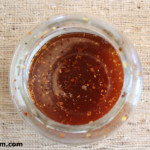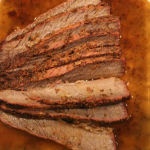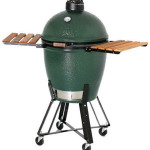Brining is the process of using salt to season and bring out the natural flavors in meat. Generally speaking, when most people think about brining, the image of soaking a cut of meat in saltwater is likely what comes to mind. However, studies have shown that meat really only absorbs a little bit of salt this way anyway, and it can be messy.
Dry brining, by contrast, is basically just sprinkling salt on the meat a few hours before cooking. Not only is it less messy, but it works just as well as wet brining and is often a bit faster. With dry brining, you just use a small amount of regular table salt on the meat. Generally, you’ll want to use 1/4 teaspoon of salt per pound of meat, then refrigerate it for a couple hours.
When you dry brine, the water gets drawn out of the meat and the salt gets pulled into the meat. Then, the longer you let it sit, that meat get reabsorbed, resulting in a bit of extra moisture near the surface of the meat so when the meat is cooked, it doesn’t dry out as easily.
Although dry brining is one of those things that you’ll get a feel for the more you do it, there are a few rules of thumb to get started dry brining:
- Sprinkle the salt from your hand, not the shaker to control the flow
- Use about as much as you would at the table
- Use more salt on thicker cuts or thicker areas
- Remember that salt will be absorbed through the skin; so there’s no need to remove it
- Use 1/2 teaspoon of kosher salt per pound, but 1/4 teaspoon regular table salt per pound of meat
- Let the meat rest for at least a couple hours; thicker cuts may need as much as overnight for maxmium flavor
Keep in mind that many rubs already will have salt in them for this purpose, so be careful adding a rub to something that you’ve already brined–no one likes overly salty food!







Leave a Reply